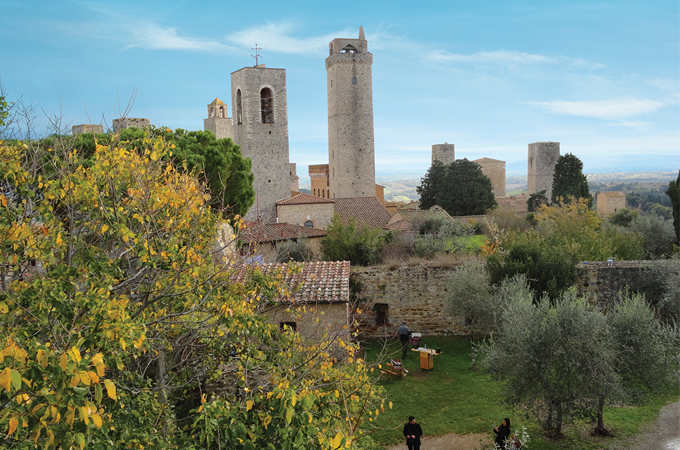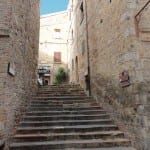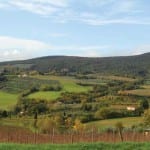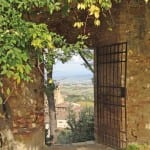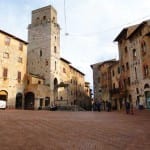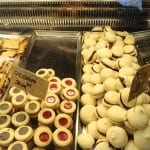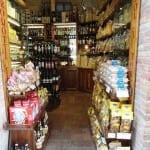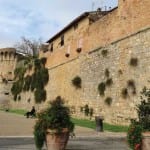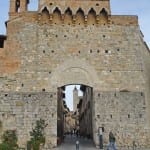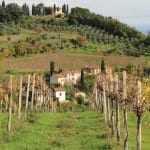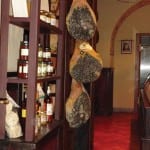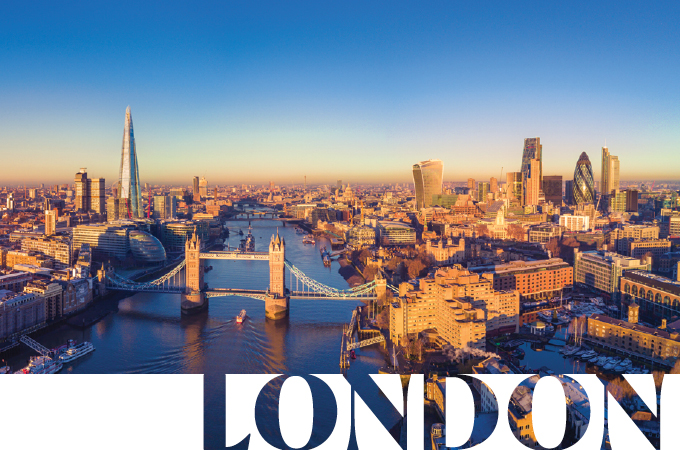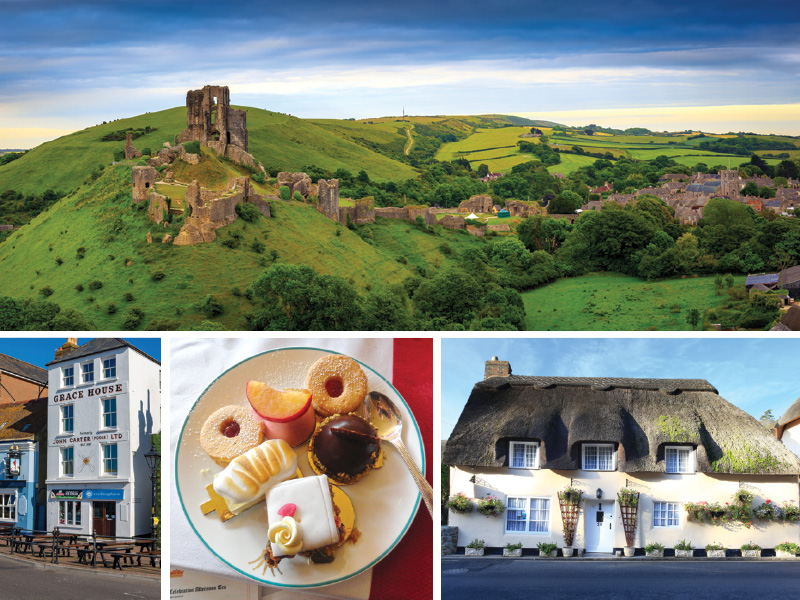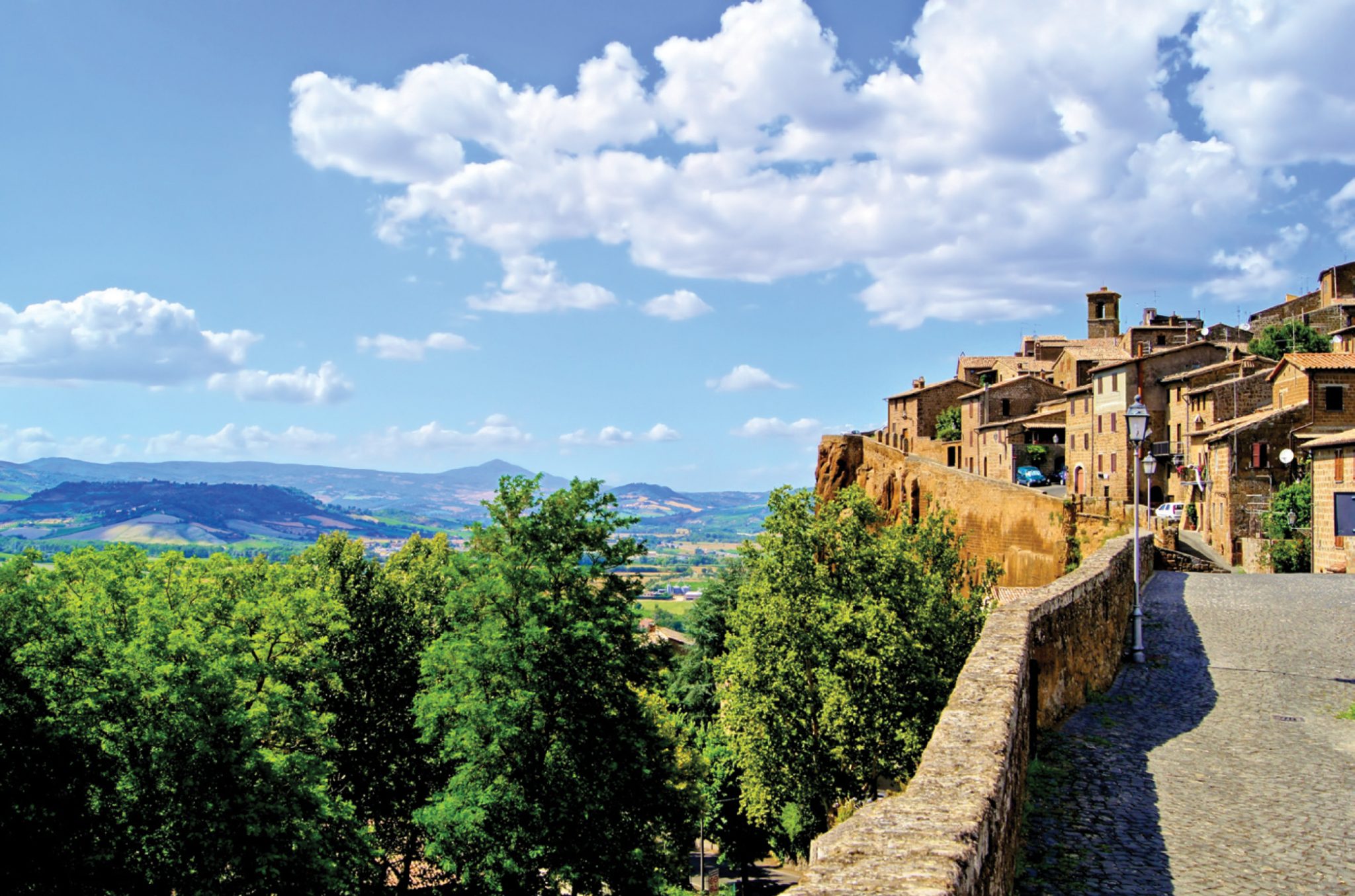If ever a place could be called the epitome of Tuscany, it’s San Gimignano, ‘the princess with towers.’ This medieval city is an enchanting vision of cobblestone walks, narrow passageways, gastronomia and, of course, towers that have been frozen in time. That’s probably what made it the setting for movies like The English Patient and Tea With Mussolini. And the borgo of choice for foreign esthetes, including Lord Byron and the Browning sisters (today, Tony Blair has a country home nearby).
Originally a fortified city of 72 towers, 14 still remain, more than enough to make it a star among stars. The lords of the surrounding countryside built towers inside the walls to protect themselves from invasions, commonplace during the Middle Ages. Additionally, there were warring factions within the walls, the Guelphs and the Ghibellines; a close look at the towers reveals openings in the stones where rocks, hot oil, slings, arrows and other missives were tossed out at interlopers. But the city thrived despite its reputation for contentious residents, in part because it was a popular stop on the Via Francigena for pilgrims passing from France to Rome (many of them originating in Canterbury, England, and immortalized by Chaucer).
Known as the ‘medieval Manhattan,’ San Gim, as the locals affectionately call it, is a UNESCO historic site where visitors can thoroughly enjoy the old and the new. Entering through the massive San Giovanni gate, you follow the narrow path past ancient storefronts displaying hog’s heads, Chianti, leather purses, painted ceramics, linens and ricciarelli (almond cookies). Don’t commit too soon, as the path leads to the main square, the historic city center where you can practically feel the ox-drawn carts and crusty blacksmiths of old without even closing your eyes.
This was the center of commerce and community, the place where people gathered, no doubt at the ancient well that gives the square its name, Piazza della Cisterna (plaza of the cistern). That landmark is the spoke around which many shops radiate, not the least of which is Gelateria di Piazza, the “World’s Best Gelato,” according to owner Sergio Dondoli. Dondoli is vice president of the Italian Gelato Association and was a member of the Italian team that won the Ice Cream World Championship in 2006/07 and 2008/09. His signature concoctions include Champelmo (pink grapefruit and sparkling wine), Rosemary Baby (raspberry and rosemary), Saguedi Bue (spicy chocolate and sour cherries) and Crema di Santa Fina (cream with saffron and pine nuts).
The area around San Gimignano is renowned for saffron, plucked from the stamen of crocus indigenous to the region. The bright powder was used 1,000 years ago as a dye in the region’s thriving silk trade, when mulberry trees were as common as olive groves now are. During that time, too (1253), the miracle of Santa Fina took place, turning a young girl into the town’s patron saint. The story holds that 11-year-old Fina dei Ciardi remained fiercely devoted to the Virgin Mary throughout her illness and the death of both parents, preaching the faith to neighbors much older and more fortunate than she. St. Gregory allegedly appeared in her room and predicted she would die on March 12, which she did. Then all the bells of San Gimignano began ringing simultaneously
on their own at her passing, and flowers sprung from the pallet on which she had languished for years. (Remember, this is Italy, the land of miracles.)
Once you’ve taken in the sense of history at Piazza della Cisterna, you should walk through the square to the best view in town (and that speaks volumes). Behind the old church, the Collegiata, are the remains of the city’s 14th-century fortress, the Rocca, where you can climb on top of the crumbling ramparts for 360-degree views of the picturesque Tuscan countryside. It’s a little bit of a hike up narrow stone stairs, but you will be rewarded with the image of a lifetime.
The picturesque town was three times visited by the Black Death, in 1348, 1464 and 1631, which probably helped to preserve it in time, as travelers—and change—avoided the sleepy hamlet until the 19th century. Now, San Gimignano is one of Tuscany’s most iconic spots.
[eat]
Italian breakfasts are usually espresso and bread/buns, while lunches are best taken on the fly—with pizza and lasagna topping the list. We had dinner at a little family trattoria in the countryside, L’Astronave (the astronaut), opened on the exact day Neil Armstrong walked on the moon. It’s a mom-and-pop affair, where traditional dishes are served family style.
[stay]
Accommodations in town are expensive, especially for what they are (which is not 4-star, or even 3). But there are charming places in the surrounding countryside, including agriturismo spots and transformed villas like the one where our Insight Vacations (insightvacations.com) group stayed, Borgo San Luigi. The 400-year-old estate is a 4-star property you enter from an elegant, cypresslined drive; cocktails are served in a terraced solarium and breakfast in the onetime stable.
[play]
Museo della Tortura (torture museum) is located off Piazza della Cisterna and graphically displays and describes medieval instruments of torture. San Gimignano 1300 is a museum that recreates the town during the Middle Ages. The original 72 towers are shown intact, and research by the universities in Pisa and Florence imparts details about the history of this onetime pilgrimage way station. Sant Agostino, a 13th-century church, has magnificent frescoes.
[shop]
This is a shopper’s paradise, with charming little storefronts up and down the main walkways. Give yourself time to savor the magnificent Italian handiwork, whether in leather, linens or ceramics. And remember, to fully enjoy the magnitude of being in a medieval town, you should try to avoid peak season when busloads of tourists can tarnish the experience.
Photos: Dorothy Weiner





